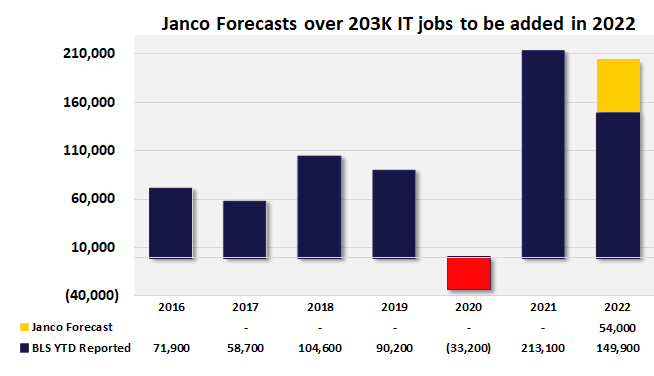
Introduction
During my tenure at a couple of very large, international organizations, I’ve been a decision maker and purchaser of IT outsourcing services. I’ve also been a provider of these same services, having held various positions at outsourcing providers. I’m currently the Sr. Strategist, Managed Services for RadixBay, which specializes in rural shore application development and system administration outsourcing.
My years of experience are currently pretty evenly balanced – about 15 years “on both sides of the fence” as a provider and purchaser.
Outsourcing Vendors and Options
Outsourcing service providers range in size from small and mid-sized shops that focus on a very specific set of services to mega-vendors like IBM, Capgemini, and Infosys that can outsource a Fortune 500’s entire enterprise.
Organizations considering outsourcing have a wide array of offerings available to them – from supplemental services designed to assist their internal teams to the provider assuming total ownership of their computing environment. Savvy outsourcing customers are now able to totally customize a relationship that meets their unique needs.
It’s Not Just Cost Reduction
We know that outsourcing’s initial core value propositions were cost reduction and the ability to provide organizations with a predictable, fixed monthly cost. As the industry matured, the IT community began to identify additional benefits of outsourcing relationships. As we’ll learn later in this article, these benefits range from getting fast access to hard-to-find skills to guaranteed continuity of support.
Outsourcing isn’t just about costs anymore, but cost reduction is, and will always be a critical comparison point. Companies employing a remote services provider don’t incur the expenses related to recruiting, screening, onboarding, and retaining in-house staff. Organizations don’t need to contribute to outsourcing personnel’s health, dental, eye care, life insurance, long/short term disability, Social Security, Medicare, unemployment, 401k retirement plans… When you are hiring a full-time employee, you also have to factor in vacations, holidays, sick days, and training costs.
That’s if you can find them.
The challenge is that competition for IT talent continues to increase. Organizations are unable to attract and hire the IT resources they need to support and improve their current environment and build new systems. Janco Associates, Inc. is a US-based consulting firm specializing in management information systems. Their business offerings include IT industry reports. Janco analyzed the latest Bureau of Labor Statistics information and found that as of August 2022 149,900 new jobs were added to the IT job market.
In addition, Janco’s report stated that “there are now 3.97 million jobs for IT Professionals in the US. For 24 months in a row, there has been an increase in the number of jobs added to the IT job market.”
Continuity and Quality of Support – Guaranteed
Once you have the employee on your staff, you then need to worry about retention. In the era of the Great Resignation, IT personnel are now considered to be “migratory workers” in many shops. Quality of life for IT support personnel is important to their longevity – you usually can’t have just one as you need a backup to ensure continuity of service. Highly marketable skill sets, long hours, tight project deadlines, and on-call support responsibilities combine to make many managers wonder about the potential impact of a critical employee loss.
Outsourcing contracts come with continuity of service – guaranteed. It should be a standard part of every outsourcing vendor’s offering. Customers are able to ensure continuity of support for their critical systems by asking the outsourcer to assume total ownership of a given platform or implement a supplemental support contract that is designed to assist their internal teams.
Outsourcing customers are able to craft a set of Service Level Agreements that help them to enforce service quality. Outsourcers work with each customer to agree upon service quality, uptimes, performance guarantees, and penalties for poor performance, which are all customizable by the customer during negotiations. During my career as an employee and industry consultant, I’ve never received an offer letter from my future employer that contained penalty-based service quality guarantees.
Who Exactly is Supporting My System?
One of the questions organizations should ask when evaluating outsourcing providers is how they deliver services to their customers. Do they assign dedicated resources that are responsible for learning the intricacies and business/technical dependencies of the systems they are supporting or are the work requests and system issues dumped into generic work queues? The vendor’s next available resource assumes ownership and becomes responsible for completing the tasks.
It all depends how important personalized service is to your organization. I personally focused heavily on this topic when I was evaluating outsourcing providers. I wanted the vendor’s staff to intimately know our environment as well as we did and become part of our team. It’s obvious that detailed documentation and step-by-step procedures are an absolute requirement for high-quality change management, but there is no substitute for a tech’s experience working with a given system on a regular basis.
You need to know exactly what you are paying for.
We learned that one of outsourcing’s benefits is that the customer can tailor a support contract that meets their unique needs. The alternatives include 100% offshore, 100% onshore, or a hybrid offshore/onshore relationship.
If you are paying a premium for onshore support, you need to make sure the work requests are being completed by onshore resources. Some outsourcing vendors will front-end the relationship with an onshore person. They are the “face” of the service delivery teams but don’t provide the bulk of the support activities. They pass the work off to team members based on complexity. If they have an offshore component, that work may be shipped overseas for completion. That isn’t a problem if you are paying for a hybrid relationship, but it is an issue if your contract specifies 100% onshore services for the supported platforms.
Offshore
Offshore providers’ primary value proposition continues to be reducing human labor costs. Although India continues to be the global leader in offshore outsourcing, other nations are mounting an ever-increasing challenge to India’s dominance. Countries in Eastern Europe, the Middle East, and other Asian nations are all competing for the outsourcing consumer’s dollar.
The challenges offshore providers face are data security and IP protection concerns, verbal and written communication issues, work quality, social stability questions, and time zone differences. As a customer of offshore services, I experienced some of these same issues. As a provider, these problems continue to be the reasons why clients decide to bring their services back onshore.
You will be evaluating both the vendor and the vendor’s country of origin. Although communication systems infrastructure and social stability questions aren’t big problems for countries like India, you’ll need to be cognizant of these potential issues when you are evaluating offshore providers from other nations.
This isn’t intended to be an indictment of offshore. In an upcoming installment of this series, I’ll provide vendor selection best practices. Like all 3rd party service provider evaluations, the quality of the services you receive will depend on the caliber of your vendor analysis.
Nearshore
Nearshore is a more recently coined term that describes outsourcing providers that are in the same time zone as their customers. Many US-based companies are now looking at vendors in countries that include, but are not limited to Mexico, Argentina, Columbia, and Brazil to provide outsourcing services.
Unlike their offshore counterparts that target all countries that have high labor costs, nearshore providers based in Mexico and South America focus primarily on US firms. In addition to cost reduction, the vendors promote the benefits of being in the same time zone as their US customer base, strong knowledge of Western business practices, fewer cultural differences than their offshore competitors, and English as their country’s most common second language.
Along with the traditional offshore concerns, social stability and the quality of their country’s communication systems infrastructure are critical vendor analysis criteria. Like their offshore counterparts, you will need to evaluate both the company and the country.
Onshore
Onshore providers understand that they’ll be competing against offshore vendors that are able to leverage low cost human labor to offer reduced hourly rates. It is a real challenge for onshore providers to compete against an offshore vendor when cost is the customer’s primary evaluation criteria.
To differentiate their offerings from offshore and nearshore vendors, onshore providers expand their value proposition by promoting the quality of their services, the security of their service delivery architecture, strong IP protection, US time zones, ease of communications, improving the customer’s ability to quickly support new technologies and immediate access to advanced skill sets.
Rural Shore
Rural shore is an offshoot of onshore outsourcing. My current employer, RadixBay is a rural shore services provider. In addition to the traditional onshore value propositions, RadixBay and our rural shore competitors differentiate our offerings by promoting both the quality and the cost-effectiveness of our services. We leverage the reduced cost of living in rural areas to provide clients with lower rates than traditional onshore competitors. In RadixBay’s case, our rural shore service delivery center is in Tabor City, North Carolina.
Our strategy is to provide our clients with service delivery rates that are more attractive than traditional onshore vendors and a value/service quality combination that allows us to effectively compete against offshore providers. Rural shore providers promote the combination of cost savings and the security, simplicity, and security of onshore support.
Comparison Chart
The rankings below are from my personal experiences as both a customer of offshore and onshore services. During my tenure as a manager of outsourcing delivery teams, it was a standard practice to ask customers why they were transferring their services from a competitor to our organization. The questions allowed us to evaluate our competitors and quickly address prior service delivery weaknesses.
Rankings from 1 to 5 with 5 being optimal.

Wrap-up
Hopefully this article provides readers with a better understanding of the benefits that outsourcing providers, like RadixBay provide. Outsourcing evaluations will always include cost as a key comparison metric. But as a purchaser and provider of outsourcing services, I think it is important for customers considering staffing alternatives to completely understand the added value that outsourcing vendors provide.
Onshore, offshore, nearshore, and rural shore are all viable options for companies evaluating outsourcing options. Each outsourcing alternative has its own unique combination of value propositions and drawbacks that must be thoroughly evaluated during the creation of any organization’s outsourcing strategy.
Thanks for reading!



